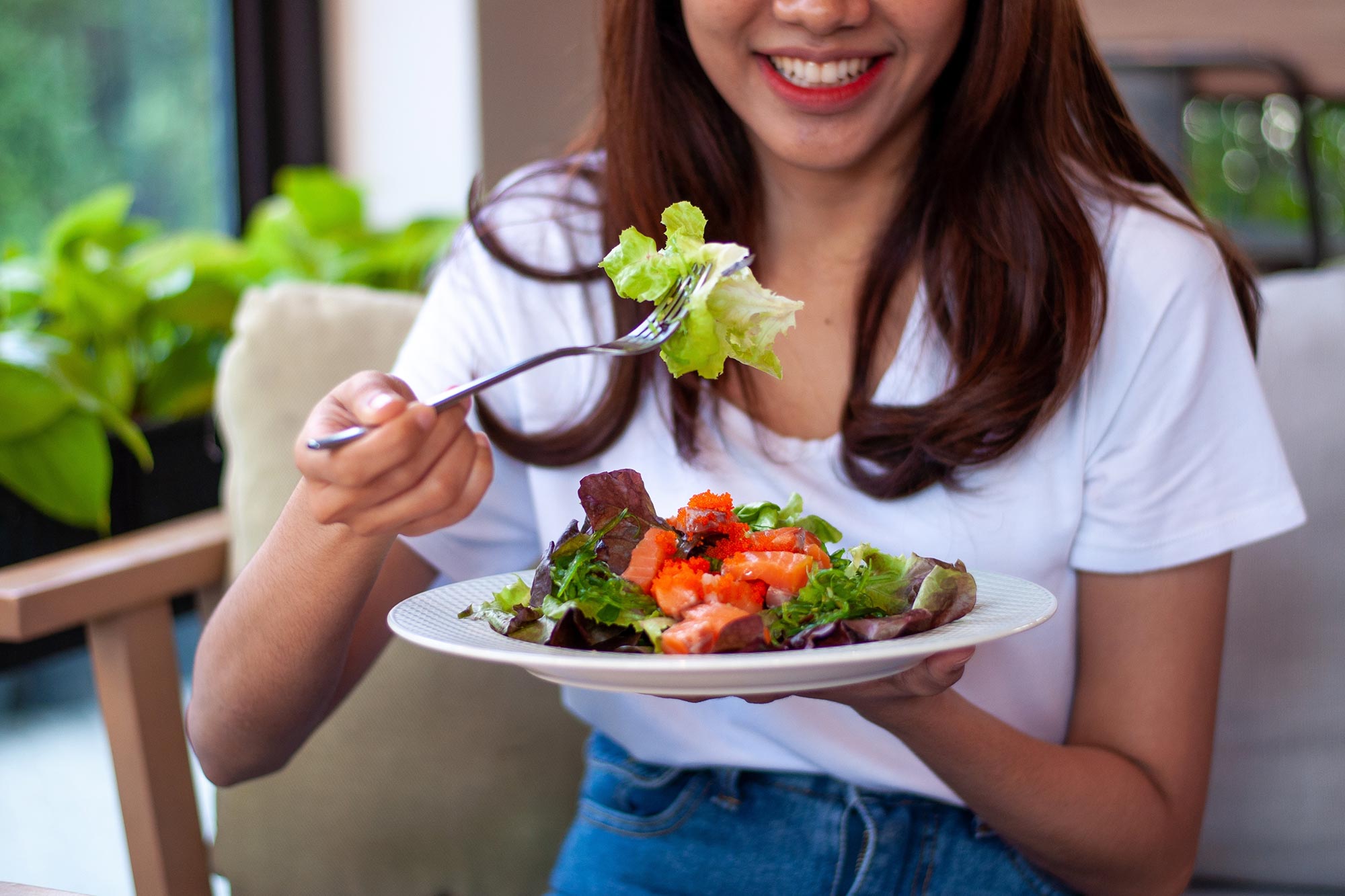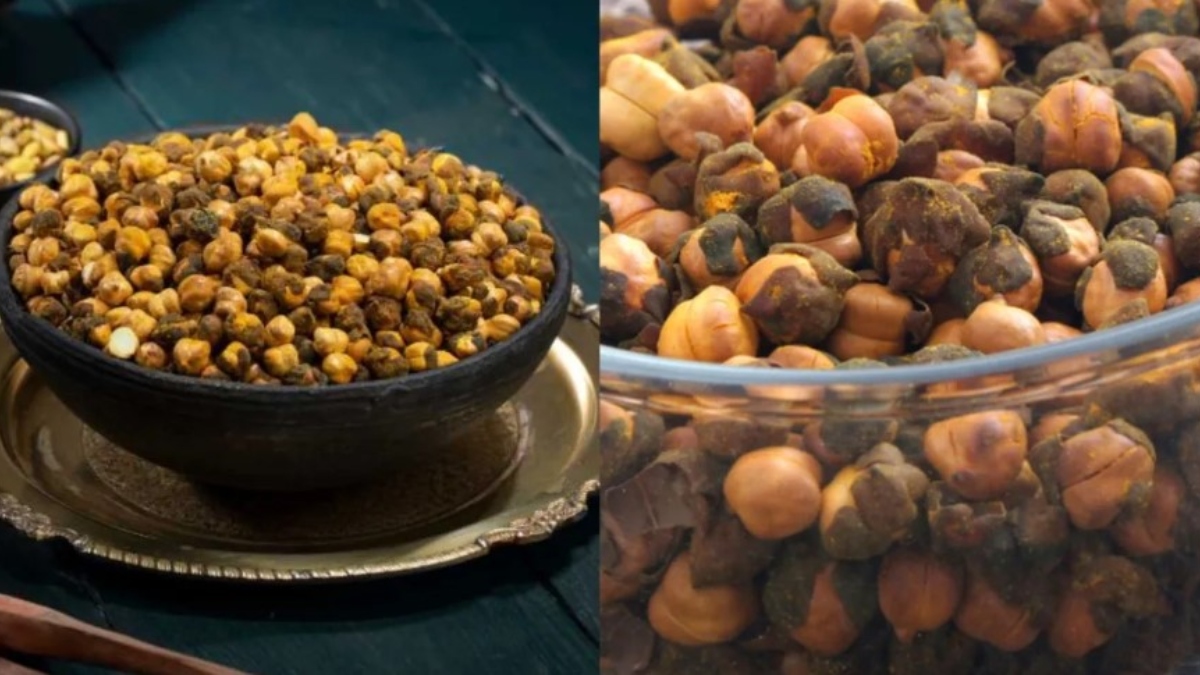For years, salads have been seen as the ultimate go-to for healthy eating. Whether it’s a weight-loss plan or a detox diet, we’ve been led to believe that a bowl full of greens automatically means we’re making a healthy choice. But as nutrition research continues to evolve, it’s worth asking — are salads really as good for us as we think, or is there more to the story?
The truth is, not every salad is created equal. Some are genuinely nutritious, packed with fiber, antioxidants, and essential vitamins. But others can be surprisingly unhealthy — loaded with creamy dressings, sugary toppings, and processed ingredients that add extra calories and fat. What truly determines whether a salad is good for you isn’t just the name “salad” — it’s what goes into it, how it’s prepared, and how much of it you eat.
Let’s explore the science, pros, cons, and surprising truths behind this popular dish and learn how to build salads that actually promote health and vitality.
1. The Popularity of Salads in Modern Diets
Salads have practically become the face of “healthy living.” Whether it’s colorful, Instagram-ready bowls or the ready-made salad boxes at your favorite café, they’re everywhere — from health restaurants to fast-food chains.
It’s easy to see why. Salads are light, easy to make, and can be customized to anyone’s taste. Most people naturally link raw veggies with freshness, low calories, and cleansing benefits — and to some extent, that’s true. But what many don’t realize is that clever marketing often makes salads seem healthier than they really are. In fact, some so-called “healthy” salads can pack in more calories and fat than a burger.
According to studies, the global salad market has grown exponentially, driven by health-conscious consumers. But ironically, many commercially sold salads are ultra-processed, defeating the very purpose of healthy eating.
2. What Makes a Salad “Healthy”?
To understand whether salads are truly healthy, let’s break down what a balanced, nutritious salad should contain. A healthy salad is not just a random mix of vegetables — it’s a strategic combination of colors, textures, and nutrients.
Key Components of a Healthy Salad:
- Leafy Greens: Spinach, kale, lettuce, arugula — rich in fiber, folate, and antioxidants.
- Colorful Vegetables: Tomatoes, carrots, bell peppers, cucumbers — full of vitamins A, C, and K.
- Lean Protein: Grilled chicken, tofu, boiled eggs, beans, or lentils for muscle repair.
- Healthy Fats: Avocado, olive oil, nuts, or seeds for brain and heart health.
- Whole Grains (optional): Quinoa, brown rice, or barley for slow energy release.
When balanced correctly, salads can boost metabolism, improve digestion, support weight management, and reduce inflammation. But the problem begins when dressing and toppings turn a healthy bowl into a calorie overload.
3. The Hidden Dangers in Common Salad Ingredients
Many people unknowingly turn their healthy salad into a nutritional trap by adding the wrong ingredients. Here’s what to watch out for:
a. High-Calorie Dressings
Creamy dressings like ranch, Caesar, blue cheese, and thousand island are often loaded with saturated fat, salt, and added sugars. Just two tablespoons can add 200–300 calories to your meal.
Healthier alternative: Choose olive oil with lemon juice, balsamic vinegar, or yogurt-based dressings.
b. Fried or Breaded Toppings
Crispy chicken strips, fried onions, or croutons add crunch but also introduce unhealthy trans fats and refined carbs.
Healthier alternative: Use roasted chickpeas, toasted seeds, or air-fried toppings for crunch.
c. Processed Meats
Bacon bits, deli meats, and sausages may enhance flavor but are high in sodium, nitrates, and preservatives, increasing the risk of heart disease and cancer.
Healthier alternative: Go for grilled chicken, boiled eggs, or tofu instead.
d. Excess Cheese
Cheese provides calcium and protein, but too much can add saturated fats and excess sodium.
Healthier alternative: Use small portions of feta, mozzarella, or cottage cheese for flavor balance.
e. Sugary Add-ons
Many “fruit salads” or “gourmet bowls” include candied nuts, sweet dressings, or dried fruits that spike blood sugar levels.
Healthier alternative: Opt for fresh fruits like apple slices, berries, or pomegranate seeds in moderation.
4. The Illusion of “Low-Calorie” Salads
Many people assume salads are always low in calories, but that’s not necessarily true. Depending on what you put in them — like creamy dressings, cheese, croutons, or processed toppings — a single serving can easily add up to 700 or even 1000 calories.
For example, a Caesar salad with dressing, croutons, and cheese can have more calories than a cheeseburger. This happens because of:
- Overuse of high-fat dressings
- Large portion sizes
- Hidden sugar and salt in commercial sauces
Tip: Always read nutritional labels if you’re buying pre-packaged salads. Restaurant salads often disguise their high calorie content under the label “fresh” or “light.”
5. Nutrient Absorption: The Role of Fat in Salads
Here’s something many people don’t realize — a completely fat-free salad isn’t actually as healthy as it sounds. Vitamins like A, D, E, and K need a bit of fat to be properly absorbed by your body.
If your salad doesn’t have any healthy fats, you could actually be missing out on important nutrients, no matter how fresh or vibrant it looks. Including a bit of olive oil, some avocado slices, or a handful of nuts can help your body absorb vitamins more effectively and keep you satisfied for a longer time.
6. The Psychology of Eating Salads
Salads often make people feel virtuous — a phenomenon known as the “health halo effect.” This psychological bias leads individuals to underestimate calorie intake simply because the food is labeled “healthy.”
As a result, people may:
- Overeat other foods later
- Choose high-calorie salad add-ons guilt-free
- Drink sugary beverages alongside salads
The key is mindful eating — understanding that even healthy foods can become unhealthy in excess.
7. The Benefits of Eating Raw and Fresh Vegetables
Despite their pitfalls, salads made with fresh, unprocessed vegetables offer undeniable health benefits. Let’s look at what you gain when you choose your ingredients wisely.
a. High in Fiber
Raw veggies like carrots, cucumbers, and leafy greens are packed with fiber, aiding digestion and maintaining gut health.
b. Rich in Micronutrients
Fresh produce provides vitamins, minerals, and phytonutrients that protect against diseases and support energy production.
c. Hydration Support
Vegetables like lettuce, tomatoes, and cucumbers are water-rich, keeping you hydrated and improving skin health.
d. Antioxidant Power
Colorful vegetables and fruits contain antioxidants that neutralize free radicals and slow the aging process.
e. Weight Management
High fiber and water content promote f
8. When Salads Can Be Bad For You
Despite their healthy reputation, salads can sometimes have downsides.
a. Unwashed Produce:
Unwashed or poorly handled vegetables can harbor bacteria like E. coli, which can lead to food poisoning.
b. Nutrient Deficiency:
Eating only salads can cause nutritional gaps, as you might miss out on essential nutrients like healthy fats, proteins, and complex carbohydrates that your body needs.
c. Digestive Discomfort:
For some, raw vegetables can cause bloating, especially cruciferous veggies like broccoli and cabbage, or due to high fiber content.
d. Too Many High-Calorie Toppings:
If you overload your salad with creamy dressings, cheese, bacon bits, and croutons, it can become more calorie-dense than a burger.
9. The Science of Building a Balanced Salad
A well-balanced salad should provide a combination of macronutrients (carbs, protein, fat) and micronutrients (vitamins and minerals). Here’s how to build one:
- Base: Start with leafy greens like spinach, romaine, or kale.
- Color & Crunch: Add a variety of colorful vegetables like bell peppers, carrots, and tomatoes.
- Protein: Include a lean protein source like grilled chicken, chickpeas, tuna, or hard-boiled eggs.
- Healthy Fats: Add avocado, nuts, seeds, or a sprinkle of cheese.
- Complex Carbs: Mix in quinoa, farro, or sweet potato for lasting energy.
- Flavor: Use herbs, spices, or a homemade vinaigrette.
Mindful Construction: By following this approach, you turn your salad from a mere side dish into a complete, satisfying, and nutritious meal.
10. Store-Bought vs. Homemade Salads
Store-Bought Salads:
- Pros: Convenient and ready-to-eat.
- Cons: Often high in sodium, unhealthy fats, and calories; dressings can be loaded with sugar and preservatives.
Homemade Salads:
- Pros: Full control over ingredients, freshness, and portion sizes.
- Cons: Requires prep time and planning.
Whenever possible, prepare your salads at home using organic, fresh ingredients for the healthiest option.
11. The Truth About Salad Dressing
Yes — dressing can make or break your salad!
Common Salad Dressing Pitfalls:
- High Sugar Content: Many creamy and bottled dressings are packed with added sugar.
- Hydrogenated Oils: Often made with low-quality, inflammatory oils like soybean or canola oil.
- Excessive Sodium: They can be surprisingly high in salt.
- Artificial Flavors: Contain preservatives and artificial ingredients.
Healthier Dressing Choices:
- Olive Oil & Vinegar: A classic, healthy base.
- Greek Yogurt-Based: Creamy without the guilt.
- Avocado or Tahini-Based: Rich in healthy fats and nutrients.
- Mustard Vinaigrette: Adds great flavor with few calories.
12. Making Salads Work for Your Waistline
It’s no secret that salads and weight loss go hand-in-hand. But the real secret is that not all salads are created equal. Your bowl can either be your greatest ally or a sneaky saboteur.
The “Stay-Full” Salad Magic:
Think of your salad as a puzzle. When you combine lean protein (like grilled chicken or lentils), healthy fats (like avocado or nuts), and plenty of fiber-rich veggies, you create a meal that keeps hunger at bay for hours. This natural combo helps you eat fewer calories overall without ever feeling like you’re depriving yourself.
The “Hunger Trap” Salad:
On the flip side, a bowl of pale lettuce drowned in a creamy, high-calorie dressing is little more than a hunger delay tactic. It might look the part, but it lacks the substance to keep you satisfied, often sending you on a search for a “real meal” just an hour later.
The Final Takeaway: A salad is only as effective as its ingredients. For true weight management success, build a bowl that’s packed with nourishing, satisfying foods that truly fuel your body.
13. Salad Hall of Fame & Hall of Shame
Navigating the world of salads can be tricky. To help you build a better bowl, here’s a lineup of champions and offenders.
Salad All-Stars (Your Go-To Meals)
- The Mediterranean Marvel: A vibrant mix of crisp cucumbers, juicy tomatoes, briny olives, and tangy feta cheese. This combination is a powerhouse of heart-healthy fats and filling fiber.
- The Quinoa Champion: A sturdy base of protein-packed quinoa, mixed with black beans, sweet corn, and a zesty lime vinaigrette. It’s a complete, plant-based meal that fuels you for hours.
- The Creamy Green Dream: Velvety avocado slices on a bed of iron-rich spinach. It’s a masterclass in healthy fats and becomes a full meal with a addition like grilled shrimp or chickpeas.
- The Rainbow Harvest: A purposeful mix of the most colorful vegetables—crunchy bell peppers, vibrant purple cabbage, and sweet carrots. This variety guarantees a broad spectrum of vitamins and antioxidants.
Salad Saboteurs (Proceed with Caution)
- The Deceptive Caesar: Don’t let the green leaves fool you. The classic Caesar is often a vehicle for a heavy, calorie-laden dressing, salty Parmesan, and refined flour croutons.
- The Imposter’s Feast: Topping a bed of greens with fried chicken strips is a nutritional contradiction. The unhealthy trans fats and processing overshadow any benefit from the vegetables.
- The Sugar-Shock Fruit Cup: When fresh fruit is swimming in a sugary syrup, it transforms from a healthy choice into a dessert masquerading as a salad, offering little nutritional value beyond a sugar rush.
- The Processed Protein Bowl: Loading up on processed deli meats like salami or honey-glazed ham introduces a heavy dose of sodium, preservatives, and unhealthy fats, undermining the freshness of your other ingredients.










